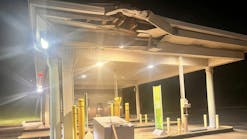Land clearing equipment can be either purpose built machines built on a compact loader chassis, such as a skid steer or compact track loader, or a full size crawler tractor.
Read also: Land clearing tools streamline land management
Other equipment usage includes various attachments mounted on carriers such as compact loaders or crawlers. Whether purpose-built or a carrier, pay attention to maintenance of the main piece of machinery.
- Clean equipment: Thoroughly wash away dirt and debris. Pay special attention to the undercarriage and control systems for any clutter left over from the previous season.
- Perform maintenance checks: Thoroughly inspect all filters, fluids, and coolant levels, and lubricate all machine components. Refer to the operator’s manual for specific instructions.
- Check batteries and electrical components: Test the battery and verify that electrical elements like lights, wipers, and flashers are working correctly. Ensure a secure connection and sufficient charge.
- Test primary functions: After performing maintenance work, make sure steering controls, parking brakes, safety features, and horns are all operational. Any abnormalities should be addressed promptly.
- Lights, reflectors, tires, and tracks: Check for damage and ensure proper tension, pressure, and cleanliness on all lamps, lenses, tires, and tracks. Well-maintained tires and tracks are also essential for fuel efficiency and a smooth ride.
- Windshields and glass: Keep these surfaces clean to ensure complete visibility during operation. Stock up on safety glass as needed according to manufacturer specifications.
- Hydraulic hoses: Look for signs of wear or damage in hydraulic hoses and replace them if necessary.
How to maintain land clearing attachments
- Mulching and stump grinder teeth: Teeth are one of the hardest working components of any attachment and may need to be replaced multiple times throughout a season depending on equipment use. These parts are subject to constant wear from processing vegetation and direct ground engagement, so it is crucial to maintain and replace them. Some teeth can be removed and sharpened, or rotated directly on a mulching attachment, to increase efficiency and productivity.
- Flail knives and rotary blades: Properly maintained blades on a flail mower, rotary mower, or a brush cutter ensure optimal performance and longevity. Inspect flail knives and blades before each use, looking for signs of wear, damage, or debris that may be stuck. Replace blades that have damage, such as bends or cracks.
- Hydraulic connections: Inspect hoses, connections, and couplers before each use. Tighten any loose connections and replace any damaged or worn parts.
- Mounting hardware: Check all mounting hardware for correct torque values. If any are loose, re-torque them to their proper specifications. Replace those that are worn or broken.
- Spindles: Replace oil and grease in spindles every 500 hours or yearly. Make sure all spindle bolts feature the correct torque values and re-torque them if needed.






